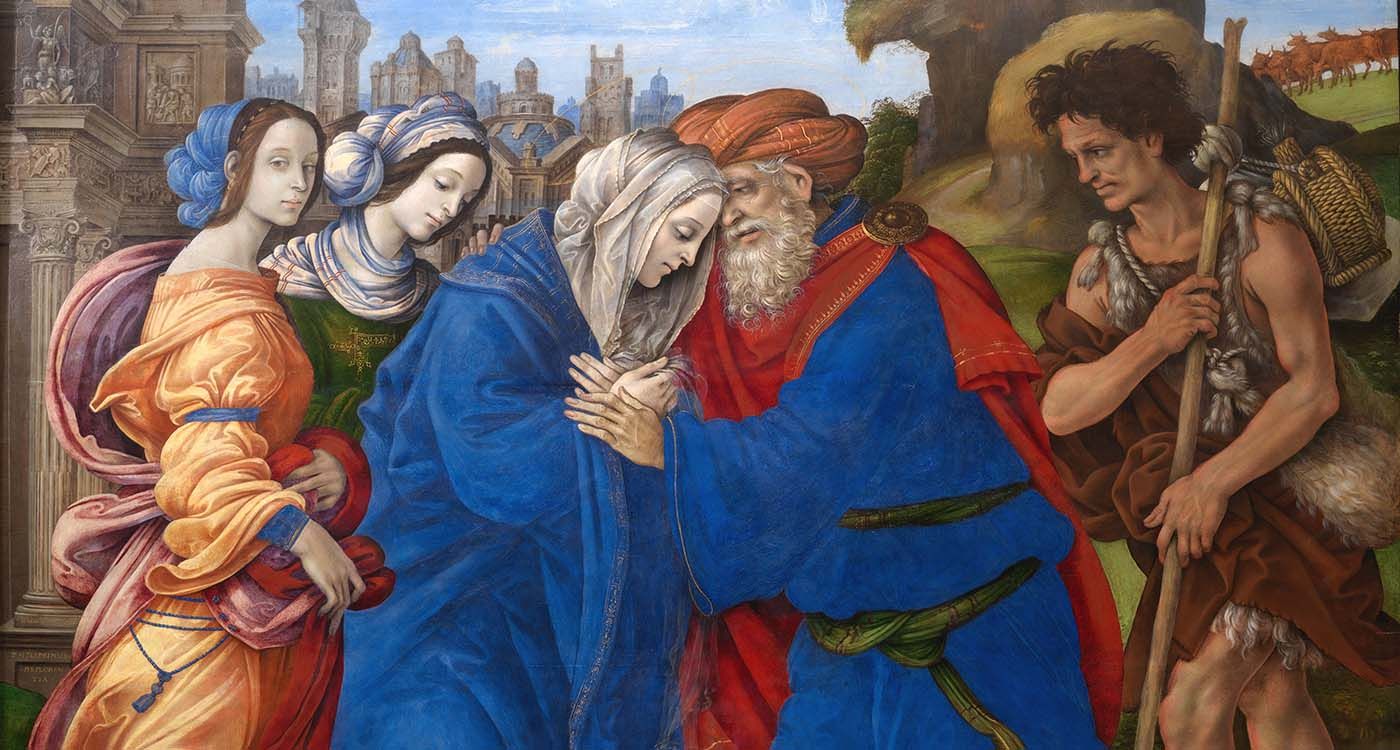
In 1305, Giotto di Bondone painted a deeply tender scene: the kiss between Joachim and Anne, the parents of the Virgin Mary, in front of Jerusalem’s Golden Gate. This fresco, housed in the Scrovegni Chapel in Padua, is widely regarded as the first kiss ever depicted in Western art history.
Within the sacred dimness of the Scrovegni Chapel, this scene immediately draws the eye with its unexpected tenderness. Two faces nearly touch, two foreheads gently meet and two lips reach for each other. This is neither Romeo and Juliet nor Tristan and Isolde, but Joachim and Anne, the biblical couple and parents of Mary, the future mother of Christ. Painted by Giotto around 1305, this modest yet deeply emotional gesture marked a radical departure from the artistic conventions of its time.
The scene forms part of a vast cycle of 38 frescoes narrating the life of the Virgin, from Joachim’s expulsion from the Temple to Christ’s Crucifixion. As a key figure in the Italian Pre-Renaissance, Giotto focused on portraying genuine emotions in his storytelling. At a time when Byzantine art remained dominant, rigid and formal, he brought his characters to life with believable gestures and vivid feelings. His style laid important groundwork for the art of the Quattrocento.
The kiss unfolds before Jerusalem’s Golden Gate, a symbolic location where Joachim and Anne – separated for many months – reunite after each received a visit from an angel announcing they would conceive a child. This meeting is not described in the Bible but comes from an ancient text of uncertain origin, the 2nd century Protoevangelium of James, which was widely popular during the Middle Ages. While the episode was familiar to 14th century Christians, it had never been depicted quite like this before.
A Revolutionary Gesture
In the fresco, Joachim moves close to Anne with heartfelt tenderness. Their faces meet in a silent embrace, their hands clasped with restrained intensity. The emotion is subdued yet deeply felt. This is not a passionate kiss nor a sensual display, but a moment of pure joy, mutual recognition and divine promise. Nearby, two women quietly observe the scene, emphasizing its intimacy and significance.
In this work, Giotto achieves something unprecedented: he humanizes sacred figures. He gives them bodies that embrace, faces that weep and lips that meet in a kiss. At a time when most painters still portrayed the Virgin as a static icon, he tells her story through her parents, highlighting her earthly origins and emotional bonds. The incarnation of the divine begins in this shared kiss between two spouses.
From a technical standpoint, the scene demonstrates Giotto’s renewed mastery. The space feels real, the architecture follows perspective, the drapery has volume and the figures carry weight. Giotto no longer aims to illustrate abstract theological truths but to evoke emotion, to express faith through human experience. This gives the scene its lasting emotional impact.
Some art historians, including Erwin Panofsky, have highlighted how this scene foreshadows the Renaissance’s later focus on naturalism and psychology. Others, like Georges Didi-Huberman, see it as the emergence of “true emotion,” where art goes beyond simply showing feelings to fully embodying them. The kiss thus stands as more than an act of love, it marks a pivotal moment in the history of Western painting.
Giotto’s work in the Scrovegni Chapel had a major impact. It inspired artists like Masaccio, Fra Angelico, Piero della Francesca and even Michelangelo. The fresco of the kiss is often seen as the starting point of a more human art, one closer to lived experience and more attentive to flesh than to abstraction.
Even today, more than seven centuries later, the scene retains its power to move those who stand before it. They are not simply witnessing the “first kiss in Western art,” but encountering the emergence of a new way of seeing. It is a vision that understands the religious not as lifeless dogma, but as the story of a man and a woman, shaped by separation and reunion. And at the center of it all, a modest and eternal kiss.

Comments